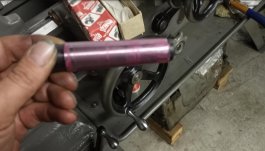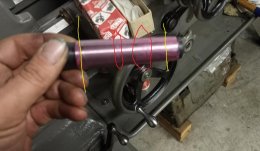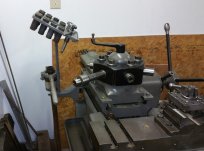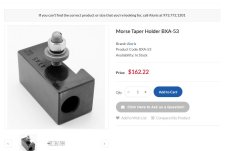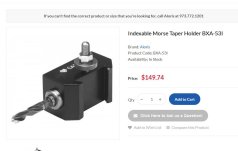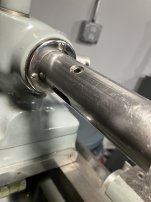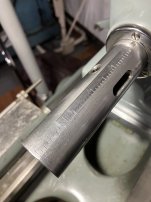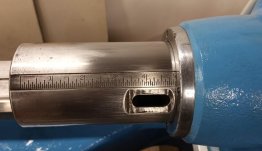jerholz
Cast Iron
- Joined
- Sep 24, 2015
- Location
- Dallas, Tx
I finally have my "new" 1958 10ee back together and running and I'm on to the next problem. The internal part of the quill where the tang on the Morse taper engages is worn to the point where it won't stop the arbor from rotating. I tried filling the worn area with JB weld SteelStik with predictable results. It didn't stick and the arbor just scooped it out.
I'm thinking about drilling and tapping holes from the sides into the worn areas and making flat bottomed inserts to engage the tang. I'm guessing the thing is pretty hard, so I'm not sure that will be doable.
Any suggestions are appreciated. It's hard to get a good picture of the damaged area but here are a couple of attempts. I have the 1.25" diameter quill.
Thanks.
I'm thinking about drilling and tapping holes from the sides into the worn areas and making flat bottomed inserts to engage the tang. I'm guessing the thing is pretty hard, so I'm not sure that will be doable.
Any suggestions are appreciated. It's hard to get a good picture of the damaged area but here are a couple of attempts. I have the 1.25" diameter quill.
Thanks.



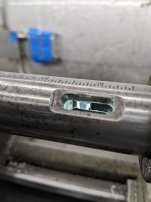

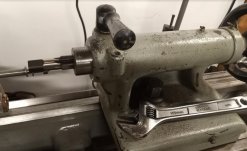
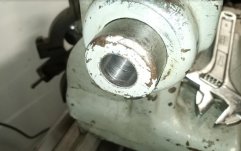
 . In this case, I was applying it to the tool, pop the tool in and out and look at contact areas. I did not realize at the time that the camera was not focused on tool, so the pic is a little fuzzy. I stopped when I had about 70%-80% contact, the "no contact" area was gouged too deep.
. In this case, I was applying it to the tool, pop the tool in and out and look at contact areas. I did not realize at the time that the camera was not focused on tool, so the pic is a little fuzzy. I stopped when I had about 70%-80% contact, the "no contact" area was gouged too deep.